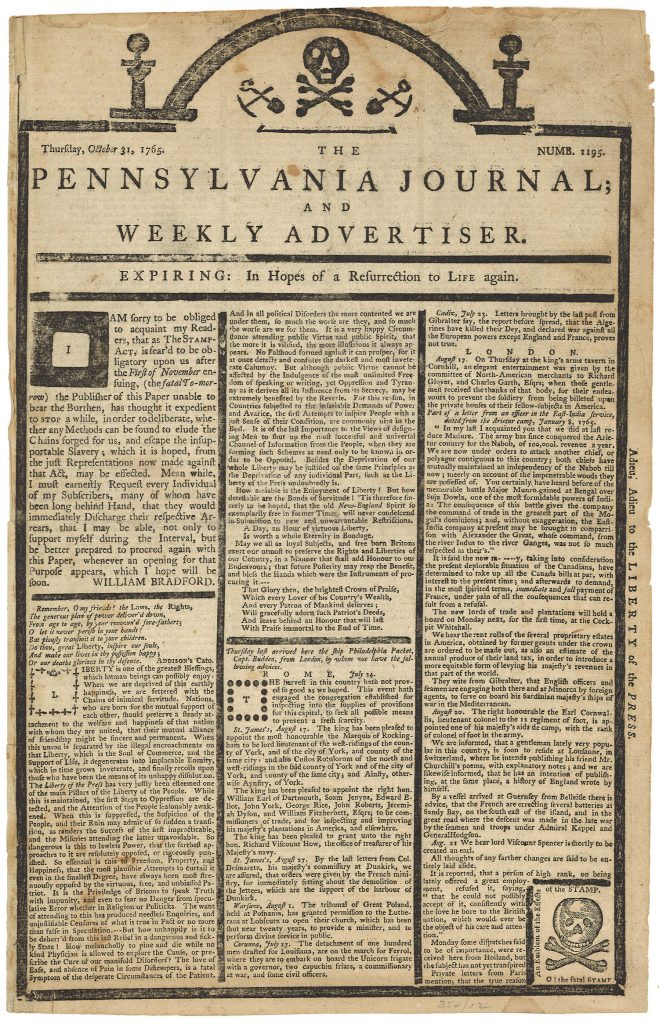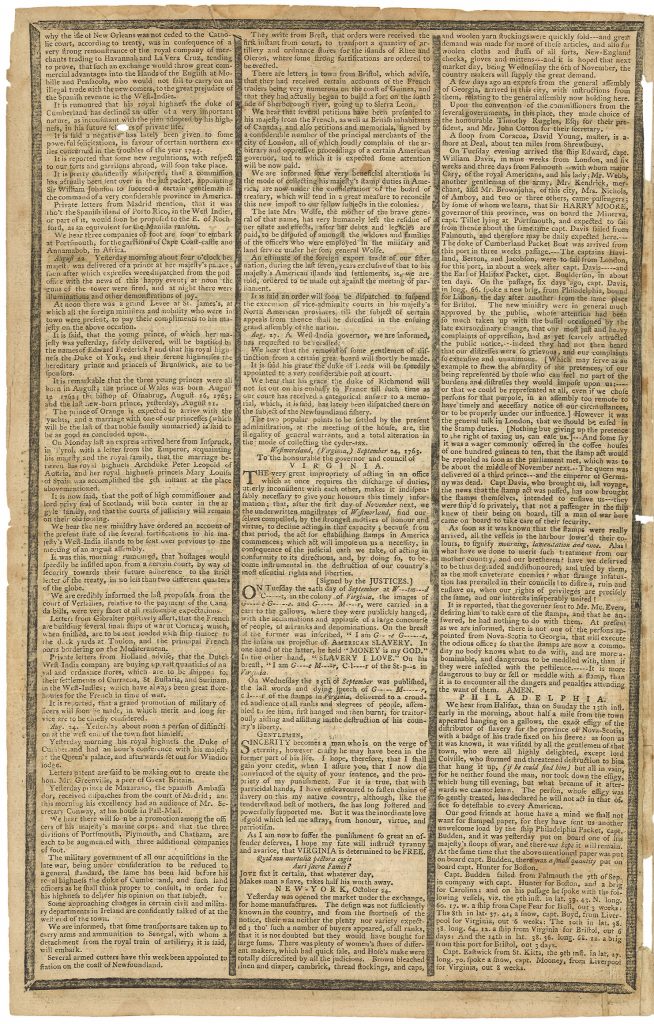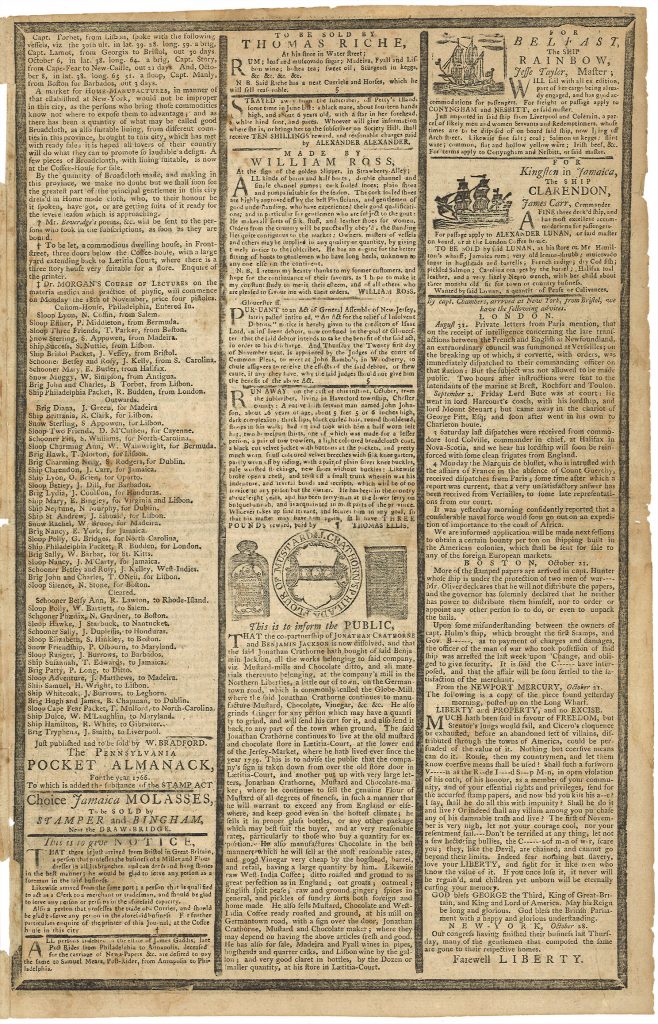One of the most famous and recognizable eighteenth-century newspapers is the October 31, 1765 issue of the Pennsylvania Journal, also known as the “tombstone edition.” With the hated Stamp Act set to take effect in the British North American colonies on November 1, 1765, Philadelphia printer William Bradford designed this issue to resemble a tombstone, symbolizing the death of his newspaper. Black and white images claiming to be the masthead of that newspaper are often featured in books, magazines and websites. However, most instances appear to be later reproductions with intentionally re-arranged graphics and re-aligned copy to nicely fit the upper half of the newspaper’s front page. Unlike the reproductions, the original 1765 newspaper features blank top corners, Bradford’s notice in the left column, and the skull and crossbones “stamp” in the lower right corner (the featured skull and cross bones still appears centered at the top of the masthead).
Below is a high resolution image of the original front page plus rarely seen images of the following three pages, which comprise the entire issue (click each image to enlarge it). A lesser known but equally dramatic graphic in this issue is the large casket on page four—underneath it reads “The last Remains of The PENNSYLVANIA JOURNAL, Which departed this Life, the 31st. of October, 1765. Of a STAMP in her Vitals, Aged 23 Years.” Bradford never stopped printing his newspaper during the Stamp Act and continued business as usual with the November 7 edition. Facing threats of violence and property destruction, the appointed Philadelphia stamp distributor, John Hughes, promised not to execute the Stamp Act.














One thought on “The Tombstone Edition: Pennsylvania Journal, October 31, 1765”
This is a great beginning in identifying the start of the war a decade later. Britain had unilaterally imposed this tax (rescinded only five months later) without consulting the Americans, who were left dumbstruck at what it meant for them, as demonstrated by Bradford’s choice of words. Never before in their experience had Parliament done such a thing, so they looked for an explanation that made sense.
To the colonists, this was not so much something that dug into their pocketbook as it was a violation of their rights to make their own revenue-related decisions in their own assemblies and not by far off Parliament where they had no voice; these actions violated their perceptions of rights allowed them under the British constitution.
In the end, all they could come up with were dark conspiracy theories they believed were aimed at making them slaves. While they were entirely without basis, they did serve an important role in the rise of dissident voices (Otis, Adams) and organizations (committees of correspondence, Sons of Liberty). The Stamp Act was just the earliest representation of a myopic British mindset, resulting in egregious unintended consequences of otherwise reasonable acts, demonstrating that they failed to fully appreciate the depth to which the colonists believed themselves tied to England by a legal cord. We see this repeatedly in the next years and must always remember just how tied to the law, and their perceptions of it, the colonists were.